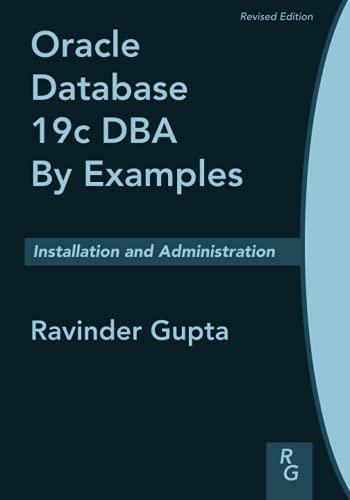Question
Original Question. Software Testing [please use Java] * The following exercise is intended to encourage you to think of testing in a more rigorous way
Original Question.
Software Testing [please use Java]
* The following exercise is intended to encourage you to think of testing in a more rigorous way than you may be used to. The exercise also hints at the strong relationship between specification clarity, faults, and test cases1 .
(a) Write a Java method with the signature
public static Vector union (Vector a, Vector b)
The method should return a Vector of objects that are in either of the two argument vectors.
(b) Upon reflection, you may discover a variety of defects and ambiguities in the given assignment. In other words, ample opportunities for fault exist. Describe as many possible faults as you can. (Note: Vector is a Java collection class. If you are using another language, interpret Vector as a list.)
(c) Create a set of test cases that you think would have a reasonable chance of revealing the faults you identified above. Document a rationale for each test in your test set. If possible, characterize all of your rationales in some concise summary. Run your tests against your implementation.
(d) Rewrite the method signature to be precise enough to clarify the defects and ambiguities identified earlier. You might wish to illustrate your specification with examples drawn from your test cases.
I found the other answer of the same question here, but they haven't met all the assignment requirement, so please do not post the same answer.
_______________________________________________________________________________
Here's the answer I got from one of the Chegg experts.
The set represented by v1 to be a representation of the set and the set union of the elements from the sets represented by v1 and v2 . i.e., that contains all the elements that appear in either the set represented by v1 or the set represented by v2. java code: import java.util.Set; public class Main { public static Set union(Set setA, Set setB) { Set tmp = new TreeSet(setA); tmp.addAll(setB); return tmp; } public static boolean isSubset(Set setA, Set setB) { return setB.containsAll(setA); } public static boolean isSuperset(Set setA, Set setB) { return setA.containsAll(setB); } public static void main(String args[]) { TreeSet
________________________________________________________________
I need help to find out all the possible faults in the program and How to correct them and the Code with no faults.
And if the above program contains no fault, then I need the code [With full comments and explanation] with faults as asked by the original question, and the code with no faults.
Thank You.
Step by Step Solution
There are 3 Steps involved in it
Step: 1

Get Instant Access to Expert-Tailored Solutions
See step-by-step solutions with expert insights and AI powered tools for academic success
Step: 2

Step: 3

Ace Your Homework with AI
Get the answers you need in no time with our AI-driven, step-by-step assistance
Get Started


